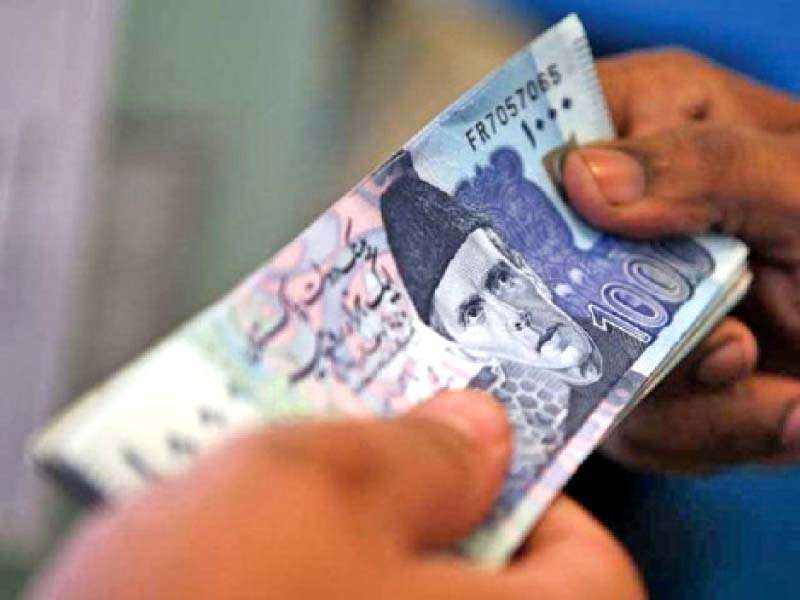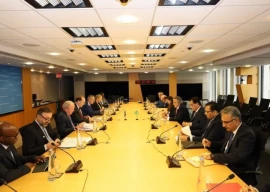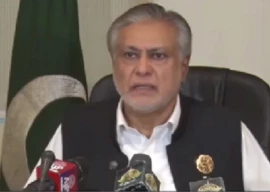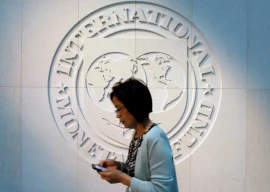
The government has capped the development spending for the first half of the fiscal year at mere 20% of the annual budget because of severe economic crisis, as multilateral creditors remained reluctant to provide any major solace to Pakistan in the aftermath of the recent floods.
However, the spending limit condition would not apply to the parliamentarians' schemes – an unsurprising development.
They would receive 100% of the annual budget within the six-month period (July-December) because of the upcoming general elections, according to sources in the planning and development ministry.
The planning ministry has issued fresh instructions to all the federal government ministries and departments, informing them that their second quarter ceiling (October-December period) had been reset at “10% of the rupee authorisation”.
Effectively, the cumulative spending during the first six months would be less than 20%, as the government had already restricted the development expenditures for the first quarter to 10% as well.
The caps have been imposed on the rupee component of Rs667 billion.
In July this year, the finance ministry had issued an office memorandum and set the first half development budget limit at 45%.
After the fresh instructions, the government has effectively reduced the development budget by 25% or over Rs180 billion, according to the details.
For the current fiscal year, the government has allocated Rs728 billion for the Public Sector Development Programme but so far only Rs54 billion or 7% of the annual budget had been spent.
The step has been taken to remain aligned with the fiscal targets agreed between Pakistan and the International Monetary Fund (IMF) under the revised $6.5 billion bailout package.
Pakistan was hopeful that it would receive some concessions from the IMF and World Bank after the devastating floods wreaked havoc in the country.
But during Pakistani authorities’ recent interaction with the the IMF and WB, the principal lenders have advised Pakistan to stay on course, according to sources privy to these discussions.
The sources added that Jihad Azour, the IMF’s director for Middle East and Central Asia Department, has delivered an unequivocal message to Pakistan that the country had to stick to the programme targets.
After these meetings, Pakistan has begun the process to complete the unfinished work agreed under the programme.
Finance Minister Ishaq Dar said on Wednesday that Pakistan would not seek any relief from the IMF.
He added that the country would complete the programme by June next year.
Diplomatic sources said the international lending community was sympathetic to Pakistan because of the floods but this compassion might not translate into dollars due to the international political environment.
Before departing to Washington, Dar had said that an IMF staff-level review mission would come to Pakistan on October 26 for the 9th review of the bailout programme.
The mission is not arriving next week and new dates have not yet been finalised, according to the sources.
Both the sides have mutually agreed to delay the mission by at least three weeks because of a delay in the finalisation of the Post Damage and Need Assessment report of the floods.
The WB-led team is finalising the report and its initial estimates suggested over $32 billion cost of the damages and losses caused by the floods.
However, despite the testing economic times, the government has decided to give the entire budget of the parliamentarians’ schemes during the first six months of the fiscal year.
The National Assembly had approved Rs70 billion for the parliamentarians’ schemes in June, which the federal cabinet this week decided to increase to Rs87 billion.
In its office memorandum to the Cabinet Division, which deals with the parliamentarians’ schemes budget, the government has also shown the budget cap at 10% for the second quarter.
However, the sources said internally it had been decided the Cabinet Division would be handed over the entire sum.
After excluding the amount of the parliamentarians’ schemes, the effective spending of all the ministries and departments comes down to 15%, if these ceilings are followed in letter and spirit.
The development portfolio comprises 1,178 schemes that require another Rs7 trillion for completion.
With the current pace and available budget, it will take over a decade to complete just the ongoing schemes.
According to office memorandums of the planning ministry issued last week, the Aviation Division would receive Rs405 million to spend in the first half, the Board of Investment Rs161 million and the Climate Change Division Rs1.9 billion -- all falling within the 20% limit.
The water resources ministry's first half spending limit has been capped at Rs17.8 billion or 18% of the annual allocation.
The power sector’s six-month limit is Rs12.6 billion, or 30% of the annual allocation, due to the higher portion of foreign loans.
The Pakistan Atomic Energy Commission’s spending has been set at Rs5.2 billion, or 20% of the annual budget.
The information technology ministry has been given an exception because of its projects funded by China.
The federal education ministry has been capped at Rs1.2 billion or 20%.
The Higher Education Commission’s spending has been limited to Rs7.7 billion or 18% of the total budget.





1732003896-0/Zendaya-(1)1732003896-0-165x106.webp)
1732004108-0/Express-Tribune-(5)1732004108-0-270x192.webp)

1732000275-0/Untitled-design-(9)1732000275-0-270x192.webp)


1732002687-0/Untitled-design-(11)1732002687-0-270x192.webp)









COMMENTS (5)
Comments are moderated and generally will be posted if they are on-topic and not abusive.
For more information, please see our Comments FAQ